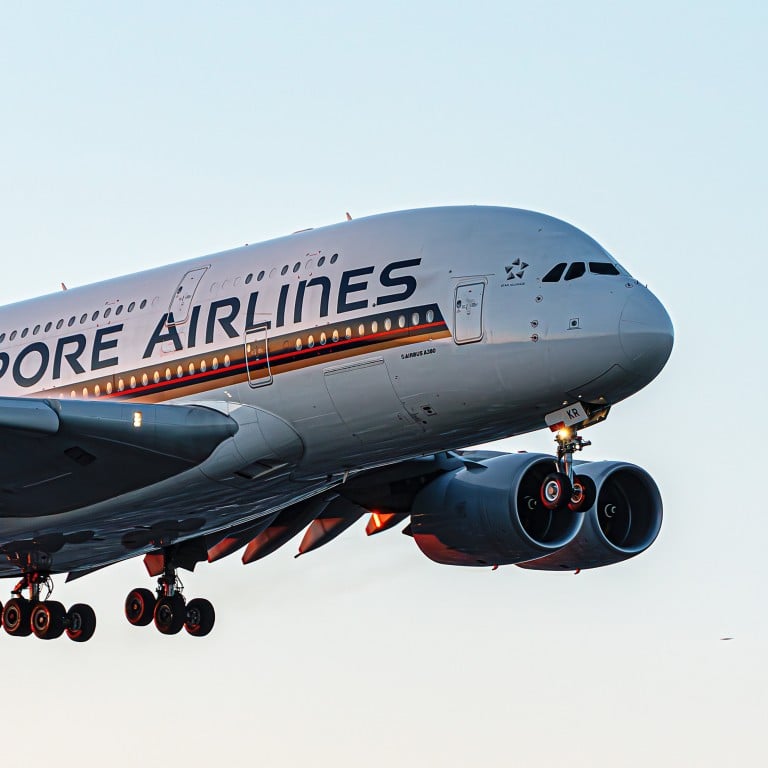
Mainland China demand crucial to restoring Singapore Airlines’ flight capacity, CEO says
- CEO Goh Choon Phong says Singapore Airlines and budget arm Scoot aim to restore pre-pandemic passenger capacity within 2024-25 financial year
- Singapore Airlines Group passenger capacity expected at about 92 per cent on average of pre-pandemic levels in December; Cathay Pacific aims for 70 per cent by year-end
Demand for travel from mainland China is crucial to restoring Singapore Airlines’ pre-pandemic passenger capacity, but it “may take a while” to recover, according to the carrier’s CEO.
The Singapore Airlines Group, which includes budget arm Scoot, aims to restore passenger capacity in the coming financial year to levels last seen before the global Covid-19 health crisis decimated demand for travel, according to a first-half earnings report released this week.
Speaking ahead of a meeting of top regional airline executives in the city state, CEO Goh Choon Phong on Wednesday stressed that achieving that goal depended on how strongly passenger demand picked up, and he singled out the mainland’s appetite for outbound travel as a key factor. But demand from the mainland had yet to reach pre-pandemic levels, he said.

“It may take a while,” he said, adding the carrier would “respond accordingly in terms of capacity”.
Goh noted the mainland resumed its 15-day visa-free arrangement for Singaporeans in July, which had helped to boost demand.
He was speaking as the carrier prepared to host the Association of Asia-Pacific Airlines Assembly of Presidents in Singapore on Thursday and Friday.
Association director general Subhas Menon said mainland China was “the elephant that was not in the room, [but] is now in the room”, referring to authorities dropping travel restrictions later than elsewhere in the region.
“But at the moment, China is still a baby elephant. So we are waiting for it to grow in size,” he said, adding that economic factors such as youth unemployment and the property market were having an impact on demand.
While international traffic levels from the mainland currently stood at only about 30 per cent of 2019 levels in the first nine months of the year, Menon said he was optimistic about the pace of recovery. He expected mainland Chinese traffic to climb “close” to returning to pre-pandemic levels by the middle of next year, while the region as a whole would do so in the early part of 2024.
Singapore Airlines is among global carriers to have recovered the fastest from the global health crisis. Strong travel demand helped the group to post a record interim net profit of S$1.4 billion (US$1.03 billion) on Tuesday for the six months to September 30, compared with S$927 million in the same period last year.
Hong Kong’s Cathay tackles staff shortages, poor morale as it chases rivals
Singapore Airlines and Scoot carried a combined 17.4 million passengers over the six months, up 52.3 per cent year on year.
Passenger capacity for the Singapore Airlines Group is expected to reach about 92 per cent of pre-pandemic levels on average in December. Hong Kong flag carrier Cathay Pacific and its budget carrier HK Express aim to reach 70 per cent of pre-pandemic flight capacity by the end of the year and fully restore levels by the end of 2024.
Goh said Scoot was the “right model” for the mainland market, as it covered 80 per cent of the 23 destinations both carriers serviced there. The group flew to 25 destinations on the mainland before the pandemic hit.
Leslie Thng, CEO of Scoot, said the habits of mainland customers had changed in the wake of the pandemic, with travellers now preferring smaller group trips rather than large ones or making solo journeys.
“The market has evolved,” he said.

Thng added his team was working on engaging mainland travellers differently, such as through business-to-consumer initiatives and targeting smaller groups “to entice them to travel to this part of the world”.
Singapore Airlines is resuming services to more cities on the mainland, including Chongqing, Chengdu, Shenzhen and Xiamen this month. Scoot will restart services to Kunming and Changsha from this month.
Singapore-based independent aviation analyst Brendan Sobie said demand for travel from the mainland to Southeast Asia had weakened after the eight-day “golden week” national holiday on October 1, with group visits in particular failing to recover.
He said Chinese visitor arrivals at Singapore Changi Airport had recovered to 69 per cent of pre-pandemic levels in September.
Sky-high air fares new normal for Hong Kong and rest of world: top Cathay executive
Before the pandemic, the mainland was Singapore’s largest market in terms of visitor arrivals.
“It is unclear when this critical market will fully recover, whether what we are seeing now is temporary or permanent,” he said. “But the short-term outlook isn’t that bright.”
Scoot will double its services to Hong Kong in December to meet holiday demand, before dropping to additional twice-a-week flights on top of its daily services until February next year.
Goh said Hong Kong remained an important market, with Singapore Airlines adding a sixth service in August next year, taking it back to pre-pandemic levels.
“The fact that we are adding capacity reflects our assessment of the demand growth during that period,” he said.

